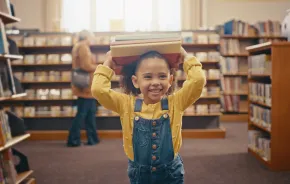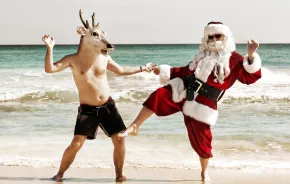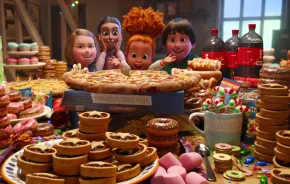
Photo:
iStock
We’ve previously covered some diverse graphic novels, and that definition of diversity includes neurodivergence. Now we take a deeper dive into a few, just a few, of the wonderful graphic novels out there featuring neurodiversity or mental illness in a way that is illustrative of the struggles that come with these diagnoses or neurotypes as well as a celebration of the things that make people with these types of brains wonderful.
I am a teacher with a Master of Arts in Teaching, which informs some of my choices, and I consulted with a wonderful public school librarian to solidify my reading list. I’m also a person who has mental illness and am neurodivergent, as are my two awesome kids. This is not an exhaustive list, and I’d love more recommendations. Note: Kids may read above or below the “target age” listed here, but I tried to keep subject matter in mind more than reading level.
“Living With Viola” by Rosena Fung
The titular Viola is a personification of the main character’s anxiety. As Livy navigates a new school, Viola looms, not unlike Anxiety in “Inside Out 2.”
Suggested age range: Late elementary through middle school
“Puzzled: A memoir about growing up with OCD” by Pan Cooke

This autobiographical graphic novel talks about the “what ifs” that often flood the minds of people with OCD or anxiety. Using the framework of a “puzzle,” the main character learns how to adapt to the way his brain works, and most importantly, how to have empathy for himself.
Suggested age range: Middle school
“Lighter Than My Shadow” by Katie Green
I wanted to include this one even though it was a really hard read, because it addresses OCD, eating disorders, food sensitivities and PTSD all in one story in a really beautiful and tactful way. There is lots of potentially triggering content, especially for people with eating disorders, and there is the depiction of bodies and assault, but it is autobiographical and powerful. The author’s note says she wrote the book that she needed to read.
Suggested age range: Middle school and up, with parental discretion
“Percy Jackson and the Olympians: The Lightning Thief – The Graphic Novel” by Rick Riordan

If you are already familiar with the mega popular book series or Disney show, you know that Percy Jackson, like all demigods, has ADHD and dyslexia. Once he finds where he belongs, he no longer feels that he has a disability, and is able to use his skills to help save the world. It’s an illustration of how, when kids don’t have to constantly adapt to the world around them, they can thrive.
Suggested age range: Elementary through middle school
“Always Anthony” by Terri Libenson
The “Emmie and Friends” series includes several titles geared toward middle grade readers and kids. Anthony, one of the protagonists in this installment, has mild dyslexia. Leah, the other protagonist, is quite anxious, following a traumatic past being bullied.
Suggested age range: Elementary school
“The Dark Matter of Mona Starr” by Laura Lee Gulledge

In this whimsical yet scientific book, depression is personified as a dark matter that follows the main character around. The story deals with intrusive thoughts and also medical gaslighting, how important it is to have a support system, and how art can help heal.
Suggested age range: Middle school and up
“The Golden Hour” by Niki Smith
I’d say this book is okay for middle graders to young adults because of the incident that causes the main character’s PTSD: witnessing gun violence. As a result, he has anxiety and panic attacks. However, this book is a beautiful exploration of anchoring techniques, friendship and the power of art to help us heal. The subtlety in the relationships comes through, and I enjoyed the Kansas setting.
Suggested age range: Middle school and up
“Just Roll with It” by Veronica Agarwal and Lee Durfey-Lavoie

Dungeons & Dragons is all the rage with the kids these days, and this graphic novel portrays OCD through the lens of a kid who likes to play D&D. The dice are the part of the game that bring her joy, but they also contribute to her anxiety-increasing behaviors. Independent from the OCD representation, it’s a good story.
Suggested age range: Elementary school and up
“Hyperbole and a Half” by Allie Brosh
I was obsessed with the blog before it was a book, and now it’s a couple of books, all of which deal with ADHD and depression with a side of humor and pathos. The sequel, “Solutions and Other Problems,” is one of the best depictions of depression I’ve ever read (mental health professionals agree). Brosh is one of the funniest people on the planet, and I quote stuff from the comics all the time.
Suggested age range: Middle school and up, with parental discretion for language
“Sensory: Life on the Spectrum” by Bex Ollerton

This graphic anthology features comics from 40 different autistic comic artists, who cover a variety of topics, from diagnosis to stimming and burnout to joy. It’s geared toward later-diagnosed autists and autistic adults, but has no content that would be inappropriate for younger readers who are interested.
Suggested age range: Late elementary school and up
More kids' books to love: |
Editor’s note: This article contains affiliate links. If you purchase products through links on our site, ParentMap may earn an affiliate commission. All images are from Amazon.











